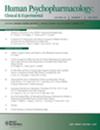Anabolic androgenic steroids used as performance and image enhancing drugs in professional and amateur athletes: Toxicological and psychopathological findings
Abstract
Objective
The use of anabolic androgenic steroids (AASs) as performance and image enhancing drugs (PIEDs), once restricted to professional athletes, now includes amateurs and regular gym visitors. AAS use is associated with psychopathology, yet this relationship is complex and not fully understood. We aimed to assess the presence of AASs and other misused substances in athletes' biological samples and link toxicological to psychopathological findings.
Methods
A multicentre, cross-sectional study in fitness centres in Italy recruited 122 professional and amateur athletes training in several sports (84 men; age range = 18-45 years). Athletes completed questionnaires, interviews, and toxicology testing for AASs, other PIEDs, illicit drugs, and non-prescribed psychotropics. Toxicology was conducted in blood, urine, and hair.
Results
Self-reported and toxicologically detected use rates of AASs and other misused substances showed slight-to-fair agreement (Fleiss' κ = 0.104-0.375). There was slight-to-moderate agreement among the three biological samples used for AAS testing (κ = 0.112-0.436). Thirty-one athletes (25.4%) tested positive for AASs. More sport hours/week, narcissistic or antisocial personality disorders, and higher nonplanning impulsiveness scores predicted AAS use (pseudo-R2 = 0.665). AAS users did not differ significantly from non-users in major psychopathology, but their Hypomania Checklist-32 score, which also predicted AAS use, was significantly higher (p < 0.001), suggesting increased odds for cyclothymic disorder or subthreshold hypomania.
Conclusions
Our results have implications for studying AAS users, as they identify a cluster of variables that may be relevant in future understanding of AAS use risks (e.g., personality disorders). Possible disagreements between AAS assessment methods should be considered when implementing harm reduction interventions, such as needle and syringe distribution, health education, and counselling, as well as surveillance programmes.

 求助内容:
求助内容: 应助结果提醒方式:
应助结果提醒方式:


